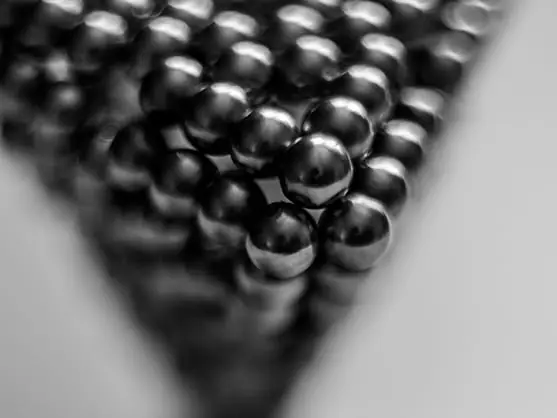
Peptide conjugation magnetic beads are powerful tools in biotechnology and molecular biology. They facilitate the covalent attachment of peptides to a magnetic core, enabling efficient separation and purification processes.
Key Takeaways
- Efficient separation: Magnetic beads allow for quick and easy separation of target molecules.
- Versatile applications: Used in protein purification, immunoprecipitation, and diagnostic assays.
- High binding capacity: Capable of binding significant amounts of peptides or proteins.
Introduction to Peptide Conjugation Magnetic Beads
What Are Magnetic Beads?
Magnetic beads are small, superparamagnetic particles that can be manipulated using an external magnetic field. These beads are typically coated with functional groups that allow for the covalent attachment of biomolecules such as peptides, proteins, and nucleic acids.
Importance of Peptide Conjugation
Peptide conjugation to magnetic beads enhances their utility in various applications. By attaching peptides to the beads, researchers can target specific molecules, enabling selective binding and separation. This is particularly useful in protein purification, immunoprecipitation, and diagnostic assays.
Types of Peptide Conjugation Magnetic Beads
Amine-Activated Magnetic Beads
Amine-activated magnetic beads are coated with primary amine groups, which can react with carboxyl or aldehyde groups on peptides. This type of bead is ideal for covalent coupling under mild conditions, preserving the activity of the peptides.
Thiol-Activated Magnetic Beads
Thiol-activated magnetic beads are functionalized with maleimide groups, which react with thiol groups on peptides. This specific interaction ensures a stable and efficient conjugation process, making these beads suitable for various bioseparation applications.
Applications of Peptide Conjugation Magnetic Beads
Protein Purification
One of the primary applications of peptide conjugation magnetic beads is in protein purification. By attaching specific peptides to the beads, researchers can selectively bind and isolate target proteins from complex mixtures. This method is highly efficient and can be scaled up for large-volume applications.
Immunoprecipitation
Immunoprecipitation is another critical application where peptide conjugation magnetic beads are used. In this technique, antibodies are conjugated to the beads, allowing for the selective capture of antigens from a sample. The magnetic properties of the beads facilitate easy separation and purification of the antigen-antibody complexes.
Diagnostic Assays
In diagnostic assays, peptide conjugation magnetic beads are used to detect specific biomarkers. The beads can be functionalized with peptides that bind to target molecules, enabling sensitive and specific detection in various diagnostic platforms.

Preparation of Magnetic Beads
Washing and Buffer Exchange
Before conjugation, magnetic beads must be thoroughly washed and equilibrated in the appropriate buffer. This step ensures the removal of any preservatives or contaminants that might interfere with the conjugation process. Typically, beads are washed with a buffer such as phosphate-buffered saline (PBS) or sodium phosphate buffer.
Conjugation Process
Amine-Activated Beads
For amine-activated beads, the conjugation process involves the reaction of the primary amine groups on the beads with carboxyl or aldehyde groups on the peptides. This reaction is often facilitated by a coupling agent such as EDC (1-ethyl-3-(3-dimethylaminopropyl) carbodiimide)1. The reaction conditions are usually mild, preserving the biological activity of the peptides.
Thiol-Activated Beads
Thiol-activated beads utilize maleimide groups to react with thiol groups on peptides. This reaction is highly specific and efficient, forming a stable thioether bond. The conjugation is typically performed at physiological pH and room temperature, ensuring high yields and minimal peptide degradation.
Post-Conjugation Steps
Blocking and Washing
After conjugation, any remaining reactive groups on the beads must be blocked to prevent non-specific binding. Common blocking agents include bovine serum albumin (BSA) or ethanolamine. The beads are then washed to remove unbound peptides and other reaction by-products.
Storage Conditions
Proper storage of peptide-conjugated magnetic beads is crucial for maintaining their functionality. The beads should be stored at 2-8°C in a buffer containing a preservative such as sodium azide to prevent microbial growth.
Advanced Applications
High-Throughput Screening
Peptide conjugation magnetic beads are increasingly used in high-throughput screening (HTS) applications. Their ability to selectively bind target molecules makes them ideal for screening large libraries of compounds or peptides. This application is particularly valuable in drug discovery and biomarker identification.
Cell Separation
In addition to protein purification, peptide-conjugated magnetic beads are also used for cell separation. By attaching cell-specific peptides to the beads, researchers can isolate specific cell types from heterogeneous populations. This technique is widely used in immunology and stem cell research.
Proteomics
Proteomics, the large-scale study of proteins, benefits significantly from the use of peptide-conjugated magnetic beads. These beads facilitate the enrichment and identification of low-abundance proteins, enhancing the sensitivity and accuracy of proteomic analyses.
Frequently Asked Questions (FAQ)
What are the advantages of using peptide conjugation magnetic beads?
- High specificity: Enables selective binding and separation of target molecules.
- Versatility: Suitable for a wide range of applications, including protein purification, immunoprecipitation, and diagnostic assays.
- Efficiency: Facilitates rapid and efficient separation processes.
How do I choose between amine-activated and thiol-activated beads?
The choice depends on the functional groups present on your peptides. Amine-activated beads are suitable for peptides with carboxyl or aldehyde groups, while thiol-activated beads are ideal for peptides with thiol groups.
What are the storage conditions for peptide-conjugated magnetic beads?
Peptide-conjugated magnetic beads should be stored at 2-8°C in a buffer containing a preservative such as sodium azide to maintain their stability and prevent microbial contamination.
Can peptide-conjugated magnetic beads be reused?
While it is possible to reuse peptide-conjugated magnetic beads, their binding capacity may decrease with each use. It is essential to follow proper washing and storage protocols to maximize their lifespan.
